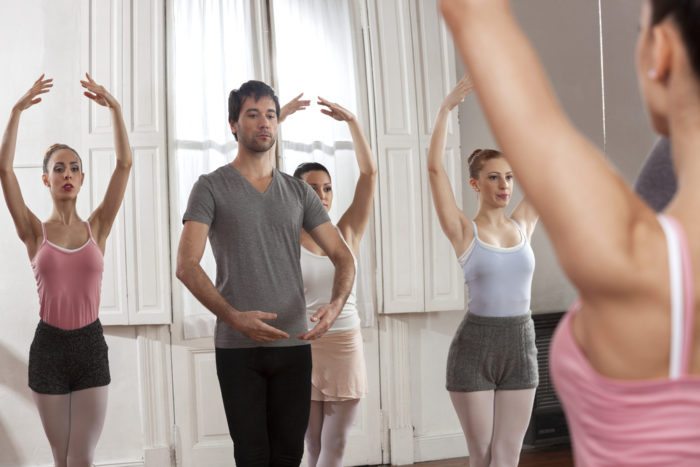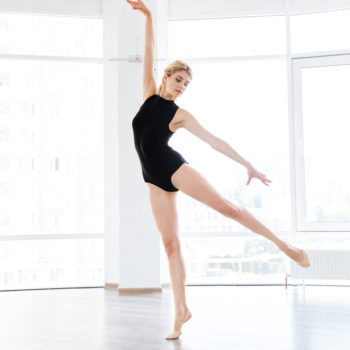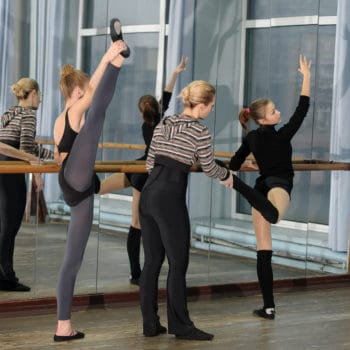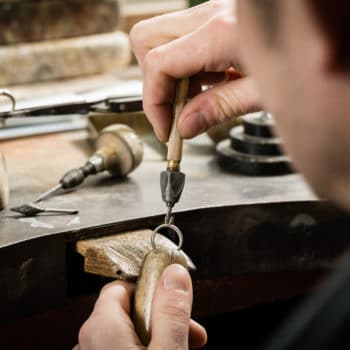Why We Love It
-
$76,710Potential Avg. Salary
-
10.8%Job Growth Rate
-
Growing DemandJob Outlook
-
Creativity FocusedCareer Attribute
Dance professors teach college courses in disciplines related to dance, including dance history, theory, choreography, and techniques like ballet, hip hop, contemporary, and jazz. They may teach both introductory and advanced courses, and they also create syllabi, lead courses, and grade assignments.
Recommended Schools
What is a Dance Professor?
The following job responsibilities are common for individuals in dance professor roles:
- Teach college courses in disciplines related to dance
- Create course syllabi and lesson plans
- Grade student assignments and performances
- Perform a variety of administrative tasks in support of the music, dance, or theater department
- Coordinate or assist with college musical, dance, and theater performances
A Day in the Life of a Dance Professor
Dance professors teach courses related to dance to undergraduate and graduate students at colleges and universities. They may teach both introductory and advanced courses. For example, a dance professor may teach an introduction to dance class to undergraduate students that is mostly textbook- and lecture-based, or he/she may teach very advanced courses that help students perfect their techniques in dance styles like ballet, hip-hop, jazz, contemporary, Latin, or ballroom. At the advanced level, professors are often practitioners of the styles of dance they teach.
In addition to teaching courses, dance professors must plan coursework and grade student assignments. They may be responsible for suggesting new courses to department leadership, creating the syllabi for courses they’re scheduled to teach, and creating lesson plans for upcoming classes. They also design and grade student assignments and submit final grades for students at the end of a semester. Often, dance professors spend more time preparing for courses than they do teaching in the classroom.
Most dance professors have additional responsibilities outside of the classroom. They may have to work on committees supporting the school’s dance or theater department, they may serve as advisors to dance department students, or they may be required to assist with or coordinate dance and theater performances offered by the school. Dance professors also frequently practice dance in their personal lives, or they may act as choreographers outside of the classroom to gain practical experience.
Typical Work Schedule for Dance Professors
Dance professors usually have flexibility in their schedules and can choose the hours and days they want to teach. They may also choose to teach courses over the summer or take summers off of work. However, most professors often work long hours outside of the classroom and may work evenings or weekends preparing lesson plans for upcoming classes.
Projected Job Growth for Dance Professors
Demand for professors of all types is expected to grow significantly in the coming decade as higher education becomes more accessible and more unavoidable. With most employers now requiring employees to hold college degrees, the demand for professors is expected to grow to meet increased interest in postsecondary education.
Career Progression
- Early Career: Dancer, Choreographer, Adjunct Dance Instructor
- Mid-Career: Assistant Dance Professor, Associate Dance Professor
- Late Career: Dance Professor, Assistant Dean, Dean
Typical Employers
Dance professors are hired by colleges and universities to work in schools with music, dance, and/or theater departments and dance degree programs.
Recommended Schools
How To Become a Dance Professor
The first step in becoming a dance professor is to earn a bachelor’s degree in a related discipline. Students commonly pursue either a bachelor of arts or bachelor of fine arts in dance, music, or theater. The degree can be theoretical—studying the history and application of dance—or it can be practical, focused on education and perfection of one or more dance styles. The focus of your study is flexible, but will likely become your teaching specialization when you become a professor.
The next step is to earn a master’s degree. Again, students can choose between a master of arts or master of fine arts, and again you’ll likely need to choose a focus area. You’ll also want to start gaining experience in the field during this time. Some colleges offer teaching assistantships to graduate students that provide opportunities to teach undergraduate courses while you pursue your master’s degree. You may also be able to find adjunct teaching positions or teach dance classes for studios that serve children.
With a master’s degree and professional teaching or performing experience, you may qualify for open dance professor roles. While some colleges may also require professors to hold a Ph.D., this is uncommon for dance professors. First, you’ll need to find a tenure-track position. If you’re successful in the duration of the tenure-track contract, you’ll be able to move into tenured associate or assistant professor roles, and eventually can become a full dance professor.
Dance Professor Salary Data
We’ve provided you the following to learn more about this career. The salary and growth data on this page comes from recently published Bureau of Labor Statistics data while the recommendations and editorial content are based on our research.
National Anual Salary
Low Range
$47,120Average
$76,710High Range
$129,150National Hourly Wage
Low Range
---Average
---High Range
---How do Dance Professor salaries stack up to other jobs across the country? Based on the latest jobs data nationwide, Dance Professor's can make an average annual salary of $76,710, or --- per hour. On the lower end, they can make $47,120 or --- per hour, perhaps when just starting out or based on the state you live in.
Salary Rankings And Facts
#160 Nationally for All Careers
Above Average Salary Nationally
Programs and Degrees
Here are the most common degrees for becoming a Dance Professor. a is usually recommended and specifically a degree or coursework that prepares you for the particular field, see below.
Highest Education Among Dance Professors
- 43.3% Doctorate
- 35.7% Masters
- 16.2% Bachelors
- 2% Associates
- 2.4% College
- 0.2% High School
- 0.2% Less than High School
Job Growth Projections and Forecast
2014 Total Jobs
120,7002024 Est. Jobs
133,700Job Growth Rate
10.8%Est. New Jobs
13,000How does Dance Professor job growth stack up to other jobs across the country? By 2024, there will be a change of 13,000 jobs for a total of 133,700 people employed in the career nationwide. This is a 10.8% change in growth over the next ten years, giving the career a growth rate nationwide of Above Average.
Growth Rankings And Facts
#169 Nationally for All Careers
Above Avg. Growth Nationally
What Companies Employ The Most Dance Professors
| Industry | Current Jobs | New Jobs Needed | % Increase |
|---|---|---|---|
| Colleges, universities, and professional schools; private | 56,000 | 7,600 | 8% |
| Colleges, universities, and professional schools; state | 36,400 | 1,400 | 1% |
| Junior colleges; local | 13,900 | 1,900 | 2% |














